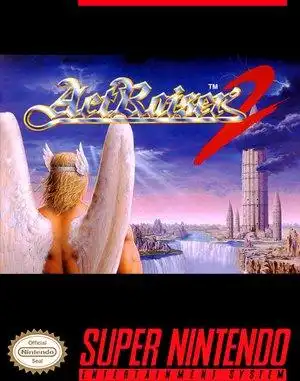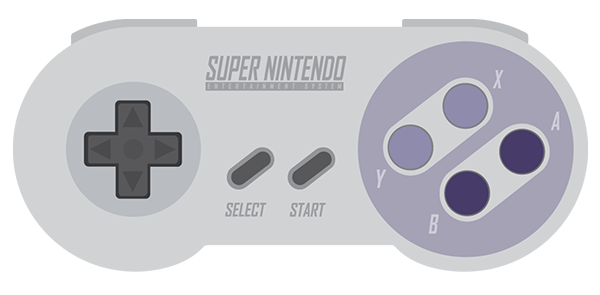Remember the unique blend of god game simulation and action platforming that made the original ActRaiser such a memorable SNES title? Well, its sequel, ActRaiser 2, decided to shake things up... drastically. Released in 1993, this follow-up from Quintet and Enix kept the divine protagonist (the Master) and the battle against evil, but it famously jettisoned the entire city-building simulation aspect.
Instead, ActRaiser 2 went all-in on the side-scrolling action. And let's be clear: it ramped up the challenge significantly. For many retro gamers, this sequel is remembered as a tough-as-nails platformer that felt like a completely different beast than its predecessor.
The Divine Platforming Gauntlet
If you came to ActRaiser 2 expecting the gentle rhythm of guiding your followers and expanding civilization, you were in for a shock. This game is pure, unadulterated platforming action from start to finish. You control the Master, descending from his sky palace to purify lands overrun by demons.
The gameplay is more sophisticated than the first game's action stages. The Master has a wider range of moves, including a more versatile jump, the ability to glide or float briefly, and a shield that can deflect projectiles. Combat revolves around his sword, but magic is crucial, requiring a charge-up mechanic that varies depending on your position (standing, crouching, jumping). Using magic consumes scrolls, adding a strategic layer to resource management, especially on harder difficulties where charging takes longer.
Each area presents two distinct acts, culminating in boss fights against demons representing lesser evils and, eventually, the personifications of the Seven Deadly Sins. The level design is often complex, filled with tricky jumps, environmental hazards, and relentless enemies. This game doesn't pull its punches; it's known for being notoriously difficult, demanding precision and patience.
A Descent into Darkness: Story & Themes
While the gameplay shifted dramatically, the narrative of ActRaiser 2 leans heavily into a darker, more mythological tone. The story picks up with the Master's eternal battle against Tanzra, his former servant who rebelled and was banished. Revived by the Seven Deadly Sins, Tanzra unleashes his forces upon the world.
The game's stages are themed around these sins – Greed, Pride, Gluttony, Envy, Sloth, Wrath, and Lust – often depicting ironic or grim scenarios caused by their influence. There are clear inspirations drawn from works like Paradise Lost and Dante's Inferno, giving the game a unique, almost literary feel rare for SNES action titles. You battle through corrupted cities, treacherous mountains, and twisted landscapes, eventually confronting each of the Sins before facing Tanzra himself in a chilling, ice-bound final encounter reminiscent of Lucifer's fate in Dante's work.
The ending, much like the first game, is philosophical, reflecting on the Master's eternal nature and humanity's evolving self-sufficiency, symbolized by a crumbling statue.
Why the Change? The Missing Simulation
The most common question surrounding ActRaiser 2 is: why did they remove the sim? While fans debated it for years, an interview with former Enix USA producer Robert Jerauld shed some light. According to Jerauld, the decision to focus purely on action came from Enix of America's request. They pushed for a more action-oriented game, perhaps believing it would appeal more broadly.
However, Jerauld himself admitted that, in retrospect, this was a "mistake." He learned from the experience the importance of listening to consumers and understanding what made the original game special – that unique genre mashup. This behind-the-scenes perspective highlights that the divisive change wasn't a random choice, but a deliberate (though perhaps misguided) business decision at the time.
Reception and Legacy
Upon release, ActRaiser 2 received mixed reactions. While praised for its challenging platforming, detailed graphics, and ambitious mythological themes, many reviewers and players felt the absence of the simulation element made it inferior to the original. It sold moderately well, but didn't reach the same level of acclaim or sales as its predecessor.
Despite the mixed reception, ActRaiser 2 is still remembered today, often cited in discussions about challenging SNES platformers or sequels that radically altered the formula. While planned follow-ups on the Saturn (which became Solo Crisis) and N64 never materialized, the game remains a fascinating, albeit difficult, chapter in the history of Quintet and Enix's SNES output. It stands as a testament to a developer willing to experiment, even if the result wasn't universally loved.
Frequently Asked Questions
Q: Is ActRaiser 2 a direct sequel to the first game? A: Yes, it continues the story of the Master and Tanzra, though the exact timeline or universe connection can feel a bit ambiguous compared to the first game's ending.
Q: Is ActRaiser 2 harder than the first ActRaiser? A: Generally, yes. The platforming segments in ActRaiser 2 are significantly more challenging and demanding than the action stages in the original.
Q: Why didn't ActRaiser 2 have the city-building simulation? A: According to a former Enix USA producer, the decision was made based on requests from the American publishing branch to focus solely on action gameplay, though this was later viewed internally as a misstep.
Final Thoughts
ActRaiser 2 is a polarizing game in the SNES library. It shed the unique simulation layer that defined its predecessor, opting instead for a brutally difficult, thematically dark platforming experience. While it might not have captured the same magic for everyone, its challenging gameplay, rich mythological story, and striking presentation make it a game worth revisiting for retro enthusiasts looking for a serious test of their platforming skills. It's a fascinating example of a sequel that took a bold, perhaps risky, step in a completely different direction.


